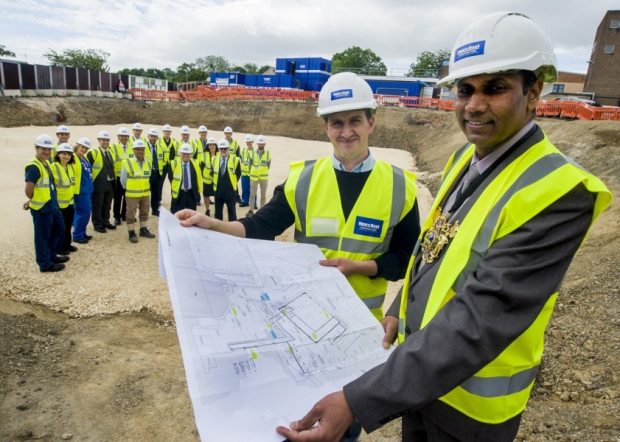The ability to manage risks as construction managers in Africa is central to the success of any infrastructure construction project. It has been proved that not only in emerging markets, where growing opportunities to invest mean elevated risks for investors and developers; it’s also the case in established markets, where unforeseen risks can derail an infrastructure project.
Most construction managers in Africa today consider a risk assessment as an essential stage in evaluating infrastructure opportunities. Legal and financial risks, usually inherent to the project itself, tend to be well analyzed and mitigated. We have a look at some of the commons risks that are in the construction industry.
Political risks
When most Governments advertise for infrastructure investment opportunities they usually focus on the positive aspects of the business environment, such as low labor costs or favorable tax obligations. As we know every aspects with positive move has its own negative side.
Political risks include state or non-state political actors negatively affecting business operations through direct or indirect interference. For infrastructure projects, this can range from nationalization and expropriation of assets by the state to unreliable contract enforcement. Political risks are not always obvious before the start of an infrastructure project; nor can they be addressed by extending deadlines and devoting more resources.
Even when construction-sector legislation is to the highest standard, inconsistent and patchy implementation can undermine it. For example, most Central and Eastern European states have, in the past decade, adopted legislation similar to that of their EU peers in Western Europe. Weak institutional capacity however often means this legislation is not implemented fully or properly, creating delays and excessive costs for developers.
Social risks
These are related not only to state policies and actors but also local stakeholders. Most infrastructure developers are familiar with social-impact assessments, and understand the impact large-scale projects can have on the local economy, social dynamics, livelihoods and the environment. In particular, local communities and stakeholders may mobilise against controversial large-scale projects with protests and other forms of direct action against construction activities.
Direct action may be motivated by concerns about the potential socio-economic impact or disputes over compensation for land and buildings. It can take the form of violent or non-violent protests, site incursions and denied access. Social risks may also manifest in less direct and obvious ways. For instance, an influx of workers for a large-scale project may cause local resentment, particularly in low-income communities, and lead to an increase in ambient crime.
Regulatory risks
Changes in the regulatory framework or individual regulatory decisions lead to regulatory risks, which have similar potential to adversely affect infrastructure projects. They often go hand in hand with political risks, as an unpredictable political environment frequently results in elevated regulatory risks. But even where political risks are low, the difference in length between political and project life cycles – which can be decades, for power and transport projects – exposes infrastructure projects to regulatory risks. This is inevitable as changing political administrations amend regulatory frameworks to suit their own political goals.
Regulatory risks can be specific to a phase of a project or can apply to the project or sector as a whole. An example of the former might be delays in receiving permits or licences necessary to begin work on a project, which may then damage a project’s profitability by lengthening the construction phase.
How to better mitigate these risks
Risk management should be based on an “all hazards and threats” perspective. In an ERM (Enterprise Risk Management) approach, political, social and regulatory issues are measured alongside environmental, security and operational risks, as well as a myriad of others facing a particular project.
ERM allows you to recognise the integrated nature of a project’s risks and the interdependence and combined effect of available mitigation options. Risks can also be addressed in a more co-ordinated manner when viewed through the enterprise risk management lens.
Such an approach, which could also be described as risk based and outcome focused, will help deliver operational and economic benefits through the entire lifecycle of any infrastructure project, and provide value to all stakeholders. Far from being a static document, it should be a dynamic process, regularly reviewed and updated to ensure effective mitigation of the identified risks.
Below are three key steps in this process, designed to help you mitigate political, regulatory and social risks:
Engage with external stakeholders
with such political risks as expropriation or nationalization, purchasing insurance may be one course of action. However, accompanying this with deeper and broader public engagement, with national or local government or local communities, will likely mitigate the risk of political intervention in the first place. Targeted interaction with relevant public bodies also provides an avenue for project stakeholders to advise on and influence policy, helping mitigate the impact of political and regulatory risks further down the line.
The first step in managing social risk is building an understanding of the project’s local environment, its key stakeholders and their concerns. In mature markets, social risks are often centred on the perceived environmental impact of a project, and the range of stakeholders is relatively well defined.
Monitor developments continually
An effective risk mitigation plan from construction managers in Africa should include monitoring, assessment and review of relevant national and local developments. This may be achieved through a market-entry assessment, scenario analysis or stakeholder mapping. Such actions enable project stakeholders to anticipate developments that have the potential to cause disruption.
Sound business conduct
Companies involved with infrastructure projects also have a responsibility for their own conduct, which includes mitigating risks to the project and to the local community. In particular, this requires ensuring that rigorous ABC policies and procedures are in place, that project staff receives anti-corruption training and that third-party contractors are also screened and compliant.

